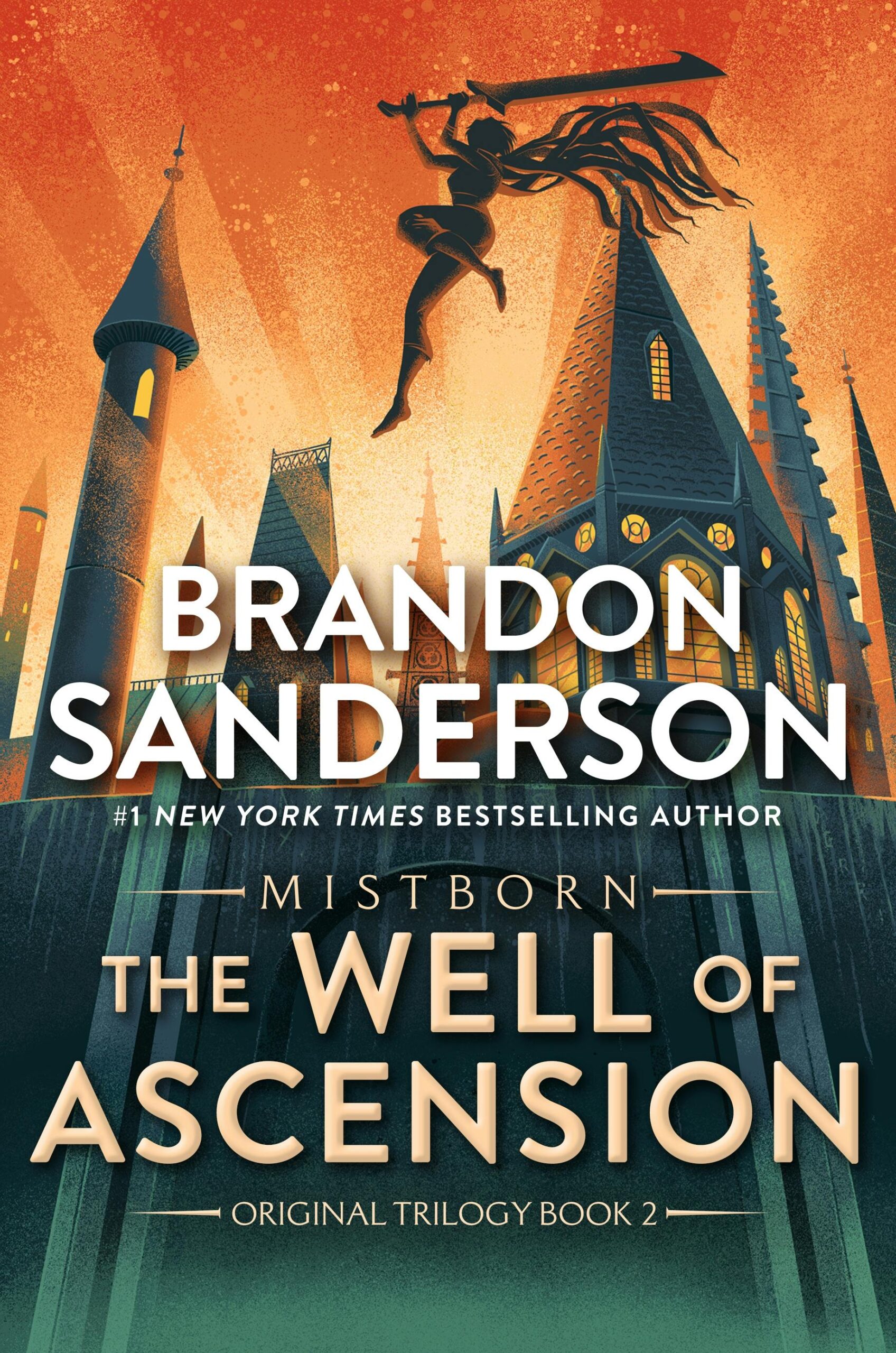
The Well of Ascension
30
by Sanderson, BrandonThe chapter opens with Sazed transcribing a metal inscription written by a man named Kwaan, who expresses deep fear and regret. Kwaan fears both Alendi’s return from the Well of Ascension and the potential doom brought by the Deepness. He reflects on his initial meeting with Alendi, describing him as a small but commanding figure who later became the supposed Hero of Ages. Kwaan laments his role in promoting Alendi as the Hero, a decision he now views as a grave mistake that led to widespread belief in Alendi’s destiny.
Kwaan recounts how he first encountered Alendi in Khlennium, where the young man’s unassuming nature and charisma drew him in. Over time, Kwaan became convinced Alendi was the prophesied Hero of Ages, despite skepticism from his peers. His stubborn pursuit of this belief led him to accompany Alendi on his journeys, inadvertently revealing his convictions to Alendi himself. This revelation allowed Alendi to cultivate his own legend, leveraging the desperation of a world threatened by the Deepness to solidify his role as the Savior.
Sazed, the focus of the framing narrative, pauses his transcription to reflect on the weight of Kwaan’s words. He had eagerly anticipated studying the rubbing during his journey north, uncertain whether its significance would hold outside the oppressive atmosphere of the Conventical of Seran. As he reviews the text, he is struck by the density of Kwaan’s writing and the profound regret it conveys. The chapter underscores the tragic consequences of Kwaan’s actions, as his unwavering belief in Alendi inadvertently fueled a destructive myth.
The narrative highlights themes of fate, manipulation, and unintended consequences. Kwaan’s account serves as a cautionary tale about the dangers of blind faith and the power of prophecy to distort reality. Sazed’s engagement with the text suggests his own scholarly pursuit of truth, contrasting with Kwaan’s earlier misguided certainty. The chapter sets the stage for deeper exploration of the Hero of Ages mythos and its impact on the world, leaving readers to ponder the reliability of historical records and the weight of legacy.
FAQs
1. What is the primary emotional tone of Kwaan’s writings, and what specific fears does he express?
Answer:
Kwaan’s writings convey a tone of deep regret and apprehension. He expresses three key fears: personal fear of Alendi’s retribution (“my death will be one of his first objectives”), existential fear about his story being forgotten, and apocalyptic fear regarding the Deepness (“a doom brought by the Deepness”). These layered anxieties reveal his complex relationship with Alendi—combining pity for what Alendi became with dread of his power. The emotional weight stems from his recognition that his own actions (identifying Alendi as the Hero) may have catastrophic consequences.2. Analyze the transformation in Alendi’s character as described by Kwaan. What factors contributed to this change?
Answer:
Kwaan describes Alendi’s evolution from an “ingenuous” youth to a ruthless leader shaped by two key factors: the burden of leadership (“a decade spent leading armies”) and the prophecy’s psychological impact. Initially small in stature but commanding respect, Alendi later actively propagated his messianic image, leveraging the Terris religion’s spread and the Deepness crisis. This suggests environmental pressures (war, religious fervor) and personal ambition combined to warp his character—a cautionary tale about power’s corrupting influence and the dangers of messianic narratives.3. How does Kwaan’s account challenge traditional hero narratives, and what literary devices emphasize this?
Answer:
Kwaan subverts hero tropes through dramatic irony and foreshadowing. While initially framing Alendi as the prophesied “Hero of Ages” (“Anamnesor/Savior”), the text reveals him as a tragic figure corrupted by power. The repeated conditional phrases (“If only…”) underscore Kwaan’s regret, transforming the narrative into a warning. The contrast between Alendi’s early “ingenuousness” and later ruthlessness deconstructs the hero myth, suggesting prophecies may create monsters rather than saviors. This aligns with the chapter’s meta-narrative about historical reinterpretation via Sazed’s scholarly perspective.4. What significance does Sazed’s physical act of transcribing the rubbing hold in relation to the text’s themes?
Answer:
Sazed’s transcription mirrors Kwaan’s original act of metal-inscription—both are preservation attempts against oblivion. The detail about Kwaan “pounding [words] into metal” contrasts with Sazed’s careful study in a “well-lit room,” symbolizing how historical truth requires both preservation and interpretation. Sazed’s concern about the text’s importance outside the dungeon setting reflects the tension between raw historical records and their contextual meaning. This reinforces the chapter’s exploration of how narratives gain/lose power through transmission—a theme paralleling Alendi’s manipulated heroism.
Quotes
1. “I write this record now, pounding it into a metal slab, because I am afraid. Afraid for myself, yes—I admit to being human. If Alendi does return from the Well of Ascension, I am certain that my death will be one of his first objectives. He is not an evil man, but he is a ruthless one.”
This opening confession sets the tone for Kwaan’s conflicted perspective on Alendi, revealing both personal fear and nuanced understanding of the protagonist-turned-antagonist. It introduces the central tension between Alendi’s nature and his destined role.
2. “Hero of Ages: the one called Rabzeen in Khlennium, the Anamnesor. Savior.”
This pivotal definition encapsulates the prophecy’s core concept that drives the entire narrative. The capitalization and single-word paragraph “Savior” emphasize the weight of this messianic figure’s supposed role in the world’s fate.
3. “If only the Terris religion, and belief in the Anticipation, hadn’t spread beyond our people. If only the Deepness hadn’t come, providing a threat that drove men to desperation both in action and belief.”
Kwaan’s lament reveals the tragic irony at the story’s heart - how well-intentioned beliefs can spiral beyond control. The “if only” refrain underscores the theme of unintended consequences that permeates the series.
